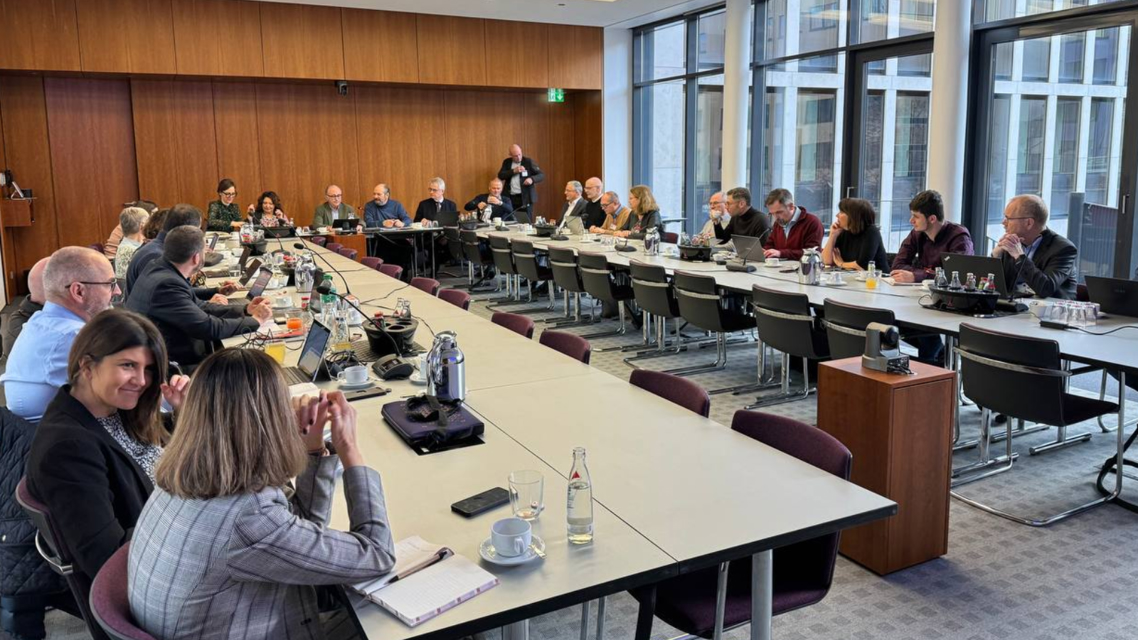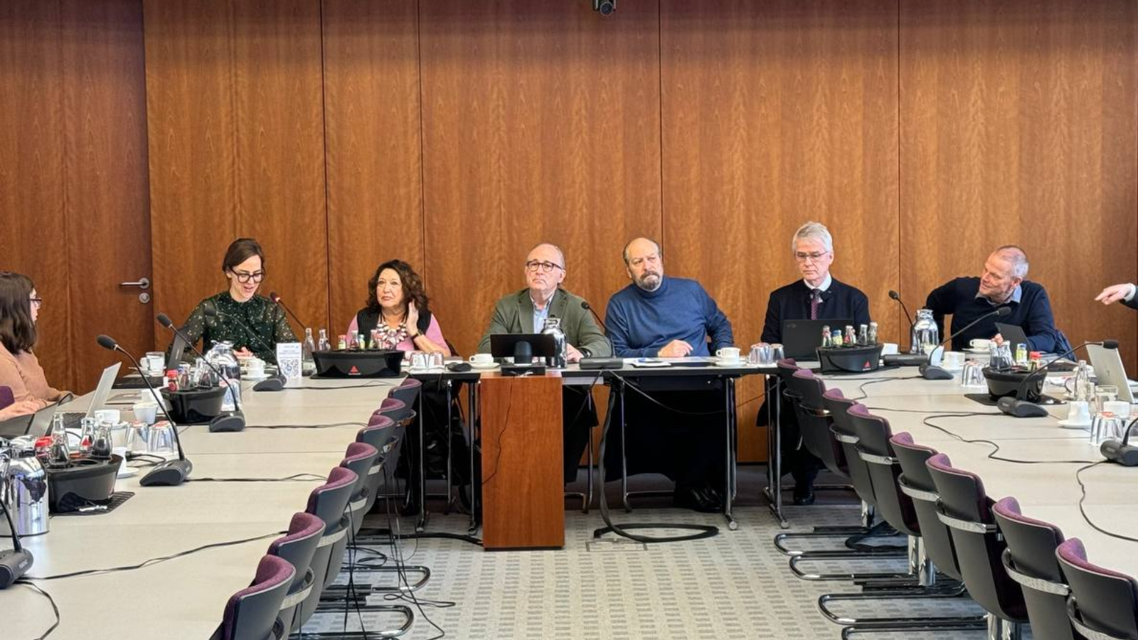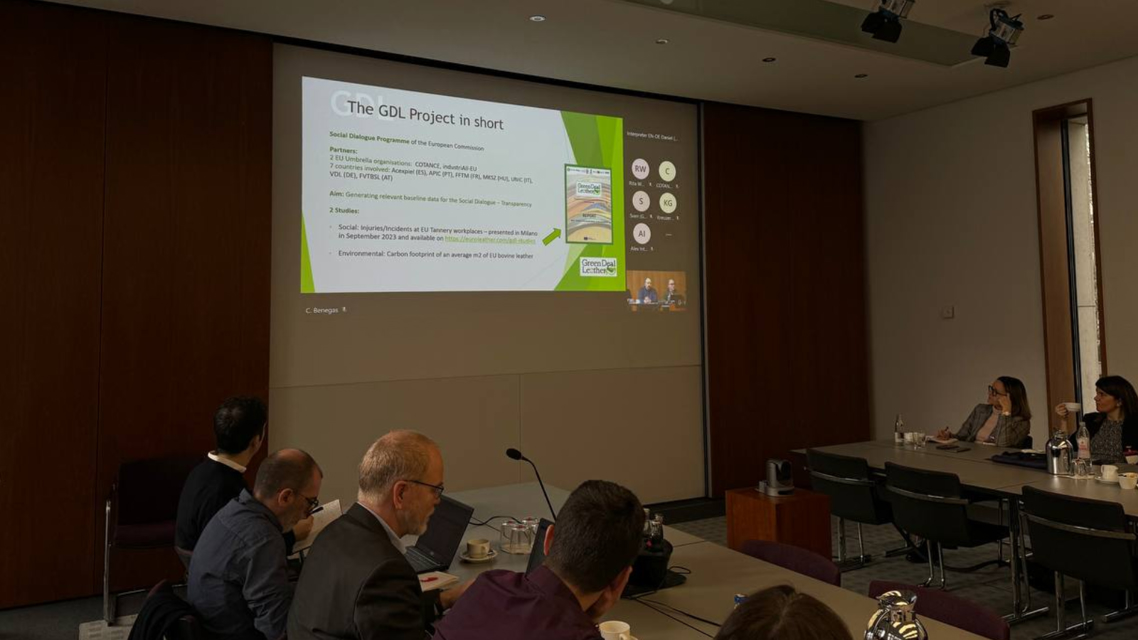The workshop, developed as part of the EU-funded social dialogue project 'Towards Zero Adverse Impact of the European Leather Industry - GREEN DEAL LEATHER', brought together national social partners, including employers from Spain (Acexpiel), Portugal (APIC), France (FFTM), Austria (FVTBSL), Hungary (MKSZ), Italy (UNIC) and Germany (VDL), as well as trade union representatives from Germany, Austria, Italy, France, Turkey and the UK.
Participants were updated on the project’s work, including on calculating the average carbon footprint of a square metre of leather using the industry tool Eco2L, which aims to provide accurate and transparent data on the energy efficiency and carbon emissions of production. With much misinformation in the media on leather, the need for real scientific data is vital.
The event was opened by Manuel Rios, President of COTANCE, who said:
“We want that our customers and the consumers understand that the carbon footprint of a high-quality leather also reflects the technology behind, and the performance characteristics provided to the leather, that will ensure a long satisfactory use of the material. The actual environmental impact of leather depends after all on the duration of service, in which leather champions.”
COTANCE's Secretary General, Gustavo Gonzalez-Quijano, said:
‘’For a layman, it is not easy to understand carbon footprint data and their environmental implications. And simply comparing one figure here with another there without the corresponding context, often leads to wrong conclusions. This is why we have put utmost care in reducing in this study the amount of information that Eco2L generates to the essentials and to provide to readers all necessary explanations.’’
With the EU aiming to be climate neutral by 2050, the leather industry and its workers are keen to play their role by producing good quality leather products, optimising the circularly economy model and aiming to use the most environmentally friendly processes available. In order for Europe to be world leaders in leather manufacturing, accurate data collection and transparency remains essential, and it is hoped that this project and the new tool Eco2L, will help the industry continue to ‘’green’’ leather production in Europe.
Judith Kirton-Darling, Acting Joint General Secretary of industriAll Europe said:
“We have a proud tradition of producing good quality leather here in Europe and we want to make the leather sector, like all manufacturing sectors, as green as possible. Workers want to make products that are quality and long lasting which don’t negatively impact the environment. Continued support and investment remains important, both from consumers in investing in green leather made in Europe and by companies and policy makers in equipment, access to green energy, and ensuring access to skilled workers to make these products’’
Project website: https://euroleather.com/news/projects/green-deal-leather


